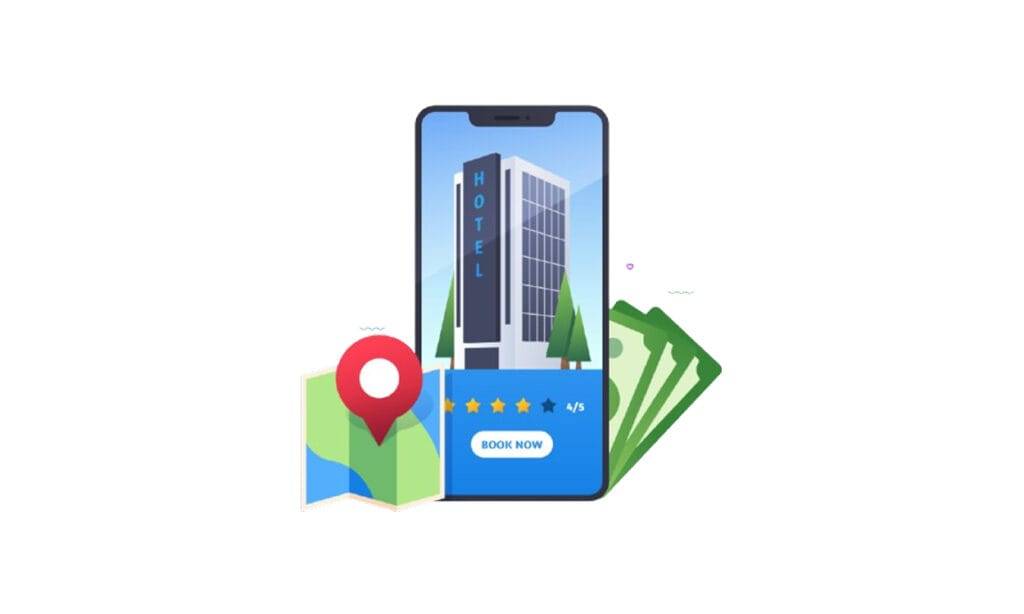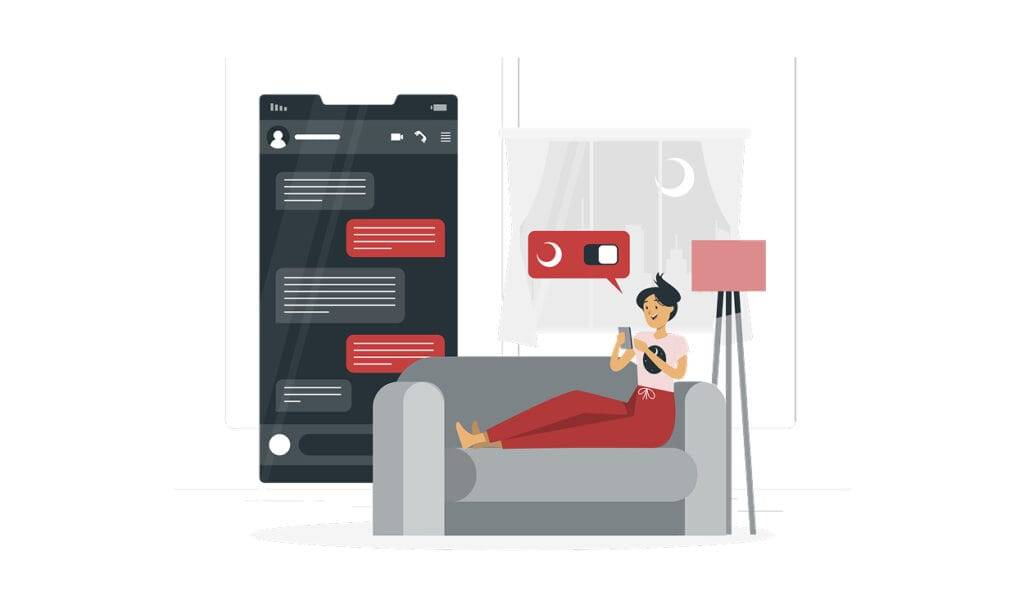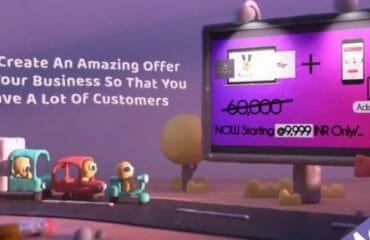
Listen Now
Getting your Trinity Audio player ready... |
Table of contents
- Introduction : 15 Points Before Hire Hotel Website Design Companies, after implement Watch Hotel Soar!
- Top Factors to Consider Before Choosing a Hotel Website Designing Agency Here List
- 1. Effective : Hotel Web Design Strategy
- 2. Color Psychology in Hotel Web Design
- 3. UI/UX Design for Hotel Websites
- 4. Responsive & Mobile-Friendly Design
- 5. SEO-Friendly Structure and Design
- 6. Online Booking Panel – Professional Design
- 7. Local SEO & Google My Business Integration
- 8. High Resolution Visual Elements & Virtual Tours
- 9. Call-to-Action (CTA) Placement
- 10. Fixed & Sticky Navigation
- 11. Luxury & Aesthetic Appeal
- 12. Minimalist Design Approach
- 13. Custom Iconography and Illustration
- 14. Glassmorphism & Neomorphism Effects
- 15. Dark Mode & Light Mode Options
- Top Factors to Consider Before Choosing a Hotel Website Designing Agency Here List
One of the first steps is creating a logo. It plays a crucial role in hotel website design for many reasons. The most important is colours combination. Your logo sets the tone for your brand’s identity. A well-designed logo communicates everything about your brand. Hire a professional logo design company to get started.

Introduction : 15 Points Before Hire Hotel Website Design Companies, after implement Watch Hotel Soar!
A solid hotel web design strategy ensures branding, user engagement, and conversions. Color psychology sets the mood, while UI/UX design with whitespace, intuitive layouts, and accessibility enhances navigation. A responsive, SEO-friendly structure with fast loading boosts visibility. Online booking integration and local SEO drive reservations. High-quality visuals, strategic CTAs, and fixed navigation improve user experience. A luxury aesthetic with a minimalist approach keeps it sleek. Custom icons, modern design trends like glassmorphism, and dark/light mode options enhance appeal, ensuring a high-performing hotel website.
Top Factors to Consider Before Choosing a Hotel Website Designing Agency Here List
- Hotel Web Design Strategy
- Color Psychology in Hotel Web Design
- Luxury & Aesthetic Appeal
- Minimalist Design Approach
- UI / UX Design for Hotel Websites
- Responsive & Mobile-Friendly Design
- Call-to-Action (CTA) Placement
- SEO-Friendly Structure and Design
- Booking Panel Professional Design
- Local SEO & Google My Business Integration
- High-Resolution Visual Elements and Virtual Tours
- Fixed & Sticky Navigation
- Custom Iconography & Illustrations
- Glassmorphism & Neomorphism Effects
- Dark Mode & Light Mode Options
1. Effective : Hotel Web Design Strategy

Understanding Hotel Web Design Strategy
In today’s competitive digital landscape, a well-planned hotel web design strategy is crucial for attracting and converting potential guests. A professional hotel website design company ensures that your site is more than just visually appealing it must function as a powerful marketing tool. A website that balances design, user experience, and SEO optimization can turn casual visitors into loyal customers.
Key Components of a Successful Hotel Website Design
An effective hotel website design strategy starts with user-friendly navigation, allowing visitors to find essential details like pricing, amenities, and booking options with ease. High-quality images of rooms, facilities, and local attractions significantly boost engagement and credibility. Moreover, a responsive, mobile-friendly hotel website ensures seamless access across all devices, catering to the growing number of mobile users.
Balancing Design and Functionality for Maximum Impact
Successful hotel web design strategy balances aesthetics with functional elements like a simple booking engine, fast loading speed, and SEO-friendly structure to enhance visibility on search engines. Features like trust signals, social proof, and clear CTAs further drive bookings. Regular updates, local SEO integration, and ADA compliance help ensure long-term success in an evolving online marketplace. Partnering with a hotel website design agency can streamline this process and keep your brand competitive.
2. Color Psychology in Hotel Web Design

Understanding Color Psychology in Hotel Web Design
Color plays a critical role in hotel web design, influencing user perception, brand identity, and booking decisions. A strategically chosen color palette for a hotel website creates an emotional connection with potential guests, making them feel welcome, relaxed, or even luxurious. A hotel website design agency must carefully select colors that align with the hotel’s theme, target audience, and branding goals to create a memorable online presence.
How Colors Impact Hotel Branding and User Experience
Every color evokes a different emotion, shaping how visitors perceive a hotel’s website design. Blue and green symbolize trust, relaxation, and nature, ideal for resorts and eco-friendly hotels. Gold and black reflect luxury and exclusivity, often used by high-end hotels. Warm tones as per need to create excitement and energy, perfect for boutique or modern hotels. A hotel web designing agency should also consider cultural interpretations of colors, especially for international hotel chains.
Strategic Use of Colors for Conversions and Engagement
Beyond aesthetics, color placement enhances usability and conversions. Contrasting CTA buttons (e.g., a bold red, Green, Blue “Book Now” button on a neutral background) draw attention and improve click-through rates. Background colors should balance readability, ensuring high contrast for text visibility. A professional hotel website design company integrates color psychology with trust signals, social proof, and mobile-friendly layouts to build credibility and encourage direct bookings.
3. UI/UX Design for Hotel Websites

Optimizing UI/UX for Hotel Web Design
A well-Professional UI/UX design for hotel websites directly impacts user experience, conversions, and overall usability. A seamless, intuitive interface keeps visitors engaged, encourages bookings, and ensures smooth navigation. A hotel website designing companies must balance aesthetics with functionality to provide a stress-free booking journey.
Essential UI/UX Elements for Hotel Websites
- Immersive Hero Section – A captivating hero image or video showcasing the hotel’s ambiance immediately grabs attention and sets the tone for visitors.
- Grid-Based Layout System – Structured layouts improve organization, guiding users effortlessly through rooms, services, and amenities.
- Intuitive UI/UX for Hotel Websites – A seamless navigation system with clear menus and CTA buttons reduces friction and increases engagement.
- Typography & Readability – Choosing easy-to-read fonts ensures accessibility while reflecting the hotel’s branding style and professionalism.
- Accessibility & ADA Compliance – Features like alt text for images, keyboard navigation, and color contrast adjustments ensure inclusivity for all users, including those with disabilities.
- Consistent Branding & Design Elements – Maintaining a unified color palette, typography, and design theme across all pages strengthens brand identity and trust.
- Trust Signals & Social Proof – Incorporating guest reviews, testimonials, awards, and security badges boosts credibility and reassures potential guests.
4. Responsive & Mobile-Friendly Design

Why Mobile-Friendly Design is Essential for Hotel Websites
With most travelers booking hotels via smartphones, a responsive and mobile-friendly hotel website design is no longer optional, it’s a necessity. A seamless mobile experience ensures users can easily navigate, browse rooms, and make reservations without frustration. A hotel website design company must prioritize fast-loading pages, adaptive layouts, and touch-friendly interactions to maximize conversions and enhance user experience.
Key Elements of a Mobile-Optimized Hotel Website
- Adaptive & Flexible Layouts – A well-designed hotel website should automatically adjust to different screen sizes, ensuring a seamless experience on desktops, tablets, and smartphones.
- Fast Loading Speed – Mobile users expect quick load times. Optimizing images, enabling caching, and using a lightweight design improves performance and reduces bounce rates.
- Thumb-Friendly Navigation – Large buttons, simplified menus, and intuitive scrolling make it easy for mobile users to explore the site and book rooms effortlessly.
- Mobile-Optimized Booking Engine – A smooth, one-click booking process with auto-fill options significantly improves conversions and enhances user convenience.
- Trust Signals & Social Proof – Displaying guest reviews, ratings, and security badges reassures visitors, increasing trust and credibility.
- SEO & Local Optimization – A mobile-first approach improves search rankings, while Google My Business integration enhances local visibility.
A professional hotel web design company ensures that mobile responsiveness aligns with SEO best practices, accessibility compliance, and user experience enhancements, leading to higher engagement and increased direct bookings.
5. SEO-Friendly Structure and Design

Why SEO Friendly Design is Essential for Hotel Websites
SEO-friendly hotel website ensures higher search rankings, better discoverability, and increased direct bookings. Without proper SEO optimization, even the most visually stunning hotel website might fail to attract organic traffic. A hotel website design company must focus on technical SEO, fast performance, and user experience to create a site that search engines and guests love.
Key Factors for an SEO, Friendly Hotel Website
- Fast Loading Speed & Performance Optimization– A slow website leads to higher bounce rates and lower rankings. Optimizing images, enabling browser caching, and using a Content Delivery Network (CDN) can significantly improve loading times.
- Mobile-First Design – Google prioritizes mobile-friendly hotel websites, making responsive design a key factor in SEO success. A hotel website design agency ensures that pages are optimized for all devices.
- Logical Site Structure & Easy Navigation – A clear hierarchy, breadcrumb navigation, and well-organized menus enhance user experience and help search engines index pages efficiently.
- Optimized Meta Tags & Headings – Strategic use of title tags, meta descriptions, and heading structures (H1-H3) improves on-page SEO, increasing the website’s visibility on search engines.
- Schema Markup & Local SEO – Adding schema markup helps search engines understand hotel details, while Google My Business integration improves local search rankings.
- Trust Signals & Social Proof – Featuring guest testimonials, security badges, and SSL encryption boosts credibility, which indirectly supports SEO by improving user engagement.
A hotel web design company need ensures that the site not only looks great but also ranks higher, loads faster, and converts visitors into guests.
6. Online Booking Panel – Professional Design

Booking Panel is Crucial for Hotel Websites
A professionally designed online booking panel plays a crucial role in maximizing conversions and revenue. A poorly optimized booking system can frustrate visitors, leading to lost reservations and increased reliance on third-party platforms. A hotel website designer must create a seamless, intuitive, and high-converting booking experience to encourage direct bookings and improve customer satisfaction.
Features of a High-Performing Booking Panel
- Simple & Intuitive Interface – A clutter-free design with clear steps, date selectors, and minimal form fields enhances user experience and reduces booking abandonment rates.
- Fast & Secure Transactions – Integrated SSL encryption, multiple payment gateways, and real-time availability updates ensure a smooth and trustworthy transaction process.
- Mobile-Optimized Booking Experience – A responsive and mobile-friendly booking system is essential, as most travelers make reservations via smartphones. A hotel website design agency ensures that booking buttons and forms are easy to navigate on all devices.
- Clear Pricing & Transparent Fees – Displaying room rates, taxes, and additional charges upfront builds trust and prevents last-minute surprises, increasing the likelihood of completed bookings.
- Urgency & Trust Signals – Features like limited-time offers, real-time availability updates, and guest reviews encourage quicker decisions while boosting credibility.
- Integration with PMS & CRM – A booking panel should seamlessly connect with Property Management Systems (PMS), Customer Relationship Management (CRM), and channel managers to streamline operations.
Booking panel, a hotel website designers need enhances direct bookings, increases revenue, and improves user satisfaction, reducing dependency on third-party booking platforms.
7. Local SEO & Google My Business Integration

Local SEO & Google My Business Are Essential for Hotels
Just as a well-designed hotel website is crucial, integrating and maintaining an optimized Google My Business (GMB) profile is equally important. Around 80% of travelers either discover hotels through Google first or search for them after visiting a website. Without a strong local SEO strategy, potential guests may choose competitors with better visibility.
A hotel website designer company must need ensure that local SEO tactics and Google My Business optimization are seamlessly integrated into the web design strategy.
Strategies for Effective Local SEO & GMB Optimization
- Claim & Optimize Google My Business Listing – Ensure your hotel’s name, address, phone number (NAP), and website URL are accurate. Add high-quality images, videos, and virtual tours to make your listing more engaging.
- Encourage & Manage Guest Reviews – Positive reviews boost credibility and influence bookings. A hotel website design agency should integrate review widgets on the site, encouraging seamless guest feedback. Responding to reviews, both positive and negative, builds trust and improves search rankings.
- Use Local Keywords Strategically – Incorporating geo-specific keywords like “luxury hotel in Delhi” or “best beachfront hotel in goa” improves local search visibility. Optimized meta descriptions, headings, and content help rank higher in Google’s local pack.
- Ensure Mobile Optimization – With mobile searches dominating local intent, a responsive hotel web design enhances user experience. A fast-loading, mobile-friendly website improves rankings and attracts more direct bookings.
- Embed Google Maps & Local Attractions – Adding an interactive Google Map on your website and listing nearby landmarks, restaurants, and tourist attractions improves local relevance. It helps guests plan their stay and enhances the hotel’s searchability.
- Consistent NAP Information Across Directories – Inconsistent information across directories like Yelp, TripAdvisor, Booking.com, and Expedia hurts SEO. A hotel website design agency ensures uniformity across all platforms.
- Leverage Google Posts & Updates – Regularly posting promotions, events, and updates on Google My Business keeps potential guests engaged. It also signals Google that the business is active, improving rankings.
Local SEO and Google My Business strategy directly impacts visibility, trustworthiness, and bookings. By working with a hotel website designing company, hotels can achieve higher local search rankings and increased direct bookings without relying heavily on OTAs.
8. High Resolution Visual Elements & Virtual Tours

Why Visual Content Matters in Hotel Web Design
In the hospitality industry, first impressions are everything. A website visitor decides within seconds whether your hotel meets their expectations. High-resolution images and virtual tours play a key role in attracting potential guests, increasing engagement, and boosting direct bookings. A professional hotel web designer ensures that visual elements effectively showcase the property’s ambiance, amenities, and unique offerings.
The Role of High-Resolution Images in Hotel Websites
Regardless of a hotel’s size, high-resolution images are a must. They provide an immersive experience, helping potential guests visualize their stay. Professional photography should cover key areas such as
- Guest Rooms & Suites – Showcasing different room types with elegant décor and amenities.
- Lobby & Common Areas – Highlighting comfort, style, and atmosphere.
- Dining & Bar Spaces – Featuring delicious cuisine and well-designed interiors.
- Amenities & Recreational Areas – Showcasing pools, spas, fitness centers, and event spaces.
Optimizing these images for fast loading speeds ensures a smooth experience on all devices, which is crucial for a hotel website design agency to maintain user engagement.
Are Virtual Tours Necessary for All Hotels?
Virtual tours are an excellent feature, but not always necessary for smaller hotels. For luxury resorts, boutique hotels, or properties with unique architecture, a 360-degree virtual tour can significantly increase trust and engagement. It allows users to explore rooms and facilities before making a booking decision.
How to Maximize Engagement with Visual Content
- Use a Consistent Aesthetic – Maintain a color scheme that aligns with your branding.
- Optimize for Mobile & SEO – Compress images without losing quality to improve loading times.
- Implement Engaging Galleries & Sliders – Allow users to explore different areas of the hotel effortlessly.
- Add Guest Testimonials with Images – A great way to build trust and showcase real experiences.
high-quality visual elements, hotels can increase engagement, improve credibility, and drive more direct bookings.
9. Call-to-Action (CTA) Placement

CATs are Big Play in Hotel website
A hotel website isn’t just about aesthetics, it should guide visitors toward action. Whether it’s booking a stay, making an inquiry, or signing up for a newsletter, strategic Call-to-Action (CTA) placement ensures higher conversions. A well-placed CTA removes hesitation, making it easy for guests to take the next step.
Where to Place CTAs for Maximum Impact
- Above the Fold : The first thing visitors see should be a clear booking button, ensuring immediate action.
- On the Homepage & Landing Pages : A mix of “Book Now,” “Check Availability,” or “Get Special Offers” buttons keeps engagement high.
- In the Navigation Menu : A persistent CTA in the header simplifies the booking process for users exploring the site.
- Within the Room & Amenities Pages : Guests should be able to book immediately after seeing details and images of the rooms.
- At the End of Blog Posts & Articles : Encourage potential travelers to explore your offers after engaging with content.
- Exit-Intent Popups & Limited-Time Offers : Subtle popups with discounts or exclusive deals can persuade undecided visitors.
Best Practices for Effective CTA Design
- Use Action-Oriented Words : “Book Your Stay Today” is more effective than “Submit.”
- Ensure High Visibility : Contrasting colors and bold fonts make CTAs stand out.
- Optimize for Mobile : Buttons should be clickable and easily accessible on small screens.
- Leverage Trust Signals : Phrases like “Best Price Guarantee” or “No Hidden Fees” boost confidence.
Hotels web designer should prioritize CTAs that feel natural and compelling, leading to higher direct bookings and improved guest engagement.
Looking For Best Hotel Website Designing Company ?
10. Fixed & Sticky Navigation

Fixed & Sticky
User experience is everything when it comes to hotel web design. Fixed and sticky navigation ensures that visitors can easily browse your site without losing access to key actions like booking, inquiries, and contact information. A well-structured navigation bar can significantly improve user engagement and reduce bounce rates.
Benefits of Fixed & Sticky Navigation
- Improved Accessibility : Visitors can quickly access important pages (rooms, amenities, bookings) no matter where they are on the site.
- Faster Conversions : A sticky “Book Now” button encourages immediate action without scrolling back up.
- Seamless Mobile Experience : Mobile users benefit from an always-visible menu, reducing frustration and improving engagement.
- Enhanced Trust Signals : Keeping elements like contact details, social proof, and special offers within easy reach can boost credibility.
A skilled hotel web designer will integrate fixed navigation seamless, balance between functionality and aesthetics. This feature plays a important role in improving the overall user experience and booking conversion rates.
11. Luxury & Aesthetic Appeal

Luxury & Aesthetic Appeal Matters
For high-end travelers, a hotel’s website is the first impression of its brand. A luxurious and visually stunning design can elevate your hotel’s perception, making it more appealing to premium guests. A website that reflects elegance, exclusivity, and sophistication reinforces your brand’s identity and directly impacts booking decisions.
Key Elements of Luxury Web Design
- High-Quality Visuals : Stunning images and videos of your property create a sense of exclusivity and immersive experience.
- Minimalist Yet Elegant Layout : A clutter-free design with ample whitespace and smooth navigation enhances the premium feel.
- Premium Typography, Color Schemes : Choosing sleek, sophisticated fonts and a well-balanced color palette conveys luxury.
- Subtle Animations, Transitions : Smooth page transitions, parallax scrolling, and hover effects add a touch of elegance without being overwhelming.
- Exclusive Offers, VIP Experiences : Highlighting concierge services, spa treatments, and luxury suites attracts high-end guests.
Practices for Luxury Hotel Website Design
- Consistency is Key : Maintain a unified brand experience across all pages.
- Emphasize Personalization : Features like a VIP booking experience or personalized guest recommendations add exclusivity.
- Seamless Performance : A luxurious design must be fast, responsive, and easy to navigate, no guest wants a slow or frustrating experience.
To blend luxury aesthetics with functionality, ensuring that the website doesn’t just look beautiful, it drives high-value bookings and enhances brand exclusivity. Many hotel website design agencies specialize in Designing bespoke designs that captivate high-end guests and maximize conversions.
12. Minimalist Design Approach

Minimalist Design Matters in Hotel Webite
A minimalist design approach ensures a clean, modern, and distraction-free experience for hotel website visitors. Cluttered layouts, excessive animations, and unnecessary content can overwhelm users and reduce conversions. A well-structured hotel web design company focuses on simplicity, making sure that every design element serves a purpose.
Principles of Minimalist Hotel web design
- Whitespace Utilization : A spacious layout enhances readability, creates visual hierarchy, and improves user focus.
- Simplified Navigation : Clear and concise menus help guests find information quickly, leading to better engagement and lower bounce rates.
- High-Quality Imagery Over Text : Large, high-resolution images of rooms, amenities, and surroundings communicate luxury and comfort more effectively than lengthy descriptions.
- Limited Color Palette : A well-curated color scheme maintains brand consistency and prevents distractions.
- Clear Call-to-Actions (CTAs) : Minimalist design ensures that CTAs, such as “Book Now” or “Check Availability,” stand out and drive higher conversions.
Best Practices for a Minimalist Hotel Website
- Mobile-First Approach : A clean, simple layout enhances mobile usability, a crucial factor in hotel bookings.
- Fast Loading Speeds : Removing excessive design elements ensures faster page load times, improving SEO and user experience.
- Consistent Branding : A professional hotel website design agency ensures that branding remains cohesive across all digital touchpoints.
Minimalist hotel web design company, hotels can create an elegant, easy-to-navigate platform that prioritizes user experience and booking conversions.
13. Custom Iconography and Illustration

Custom Iconography & Illustrations Matter
A visually appealing hotel website goes beyond just high-quality images, it needs custom iconography and illustrations to enhance branding and user experience. These unique design elements help hotels stand out, making navigation intuitive while reinforcing brand identity. At MaMITs Hotel website design company, we specialize in crafting custom icons and illustrations that align with a hotel’s theme, ensuring a seamless and engaging user experience.
How Custom Icons, Illustrations Improve UX
- Brand Identity & Recognition : Unique icons and visuals give your website a signature style, making it instantly recognizable to returning guests.
- Better Navigation & User Guidance : Intuitive hotel iconography simplifies menu structures, helping users find key sections like rooms, amenities, or booking pages quickly.
- Visual Storytelling : Engaging hotel illustrations highlight services, hotel features, and local attractions in a visually compelling way.
- Enhanced Mobile Experience : Minimal yet effective icons ensure a smooth mobile browsing experience, reducing clutter and improving readability.
- Faster Page Load Speeds : Unlike stock images, custom-designed graphics are optimized for web performance, ensuring fast-loading hotel websites.
Best Practices for Using Custom Icons and Illustrations
- Consistency in Design : Icons should match the hotel’s branding, colors, style, and aesthetics should remain uniform.
- Minimalist & Functional Approach : Use icons where they add real value, overloading a site with too many graphics can be counterproductive.
- Trust Signals & Social Proof : Incorporate icons that emphasize trust, such as verified security seals, customer reviews, and awards.
14. Glassmorphism & Neomorphism Effects

What are Glassmorphism & Neomorphism
Modern hotel websites require sleek, visually captivating designs to stand out in a highly competitive industry. Glassmorphism and Neomorphism are two emerging design trends that elevate user experience, creating a futuristic and sophisticated appeal. At MaMITs hotel web design company, we integrate these cutting-edge styles to ensure your hotel website looks premium, modern, and engaging.
Glassmorphism and Neomorphism
- Glassmorphism : This effect mimics frosted glass, creating a semi-transparent look that overlays blurred backgrounds. It adds a sense of depth and elegance, making CTAs and navigation menus more striking.
- Neomorphism : A subtle 3D soft shadowing effect that gives UI elements a more tangible and interactive feel, enhancing button clicks, icons, and input fields.
Why These Effects Matter for Hotel Websites
- Luxury Appeal : Glassmorphism enhances premium branding, perfect for high-end hotels and resorts.
- Improved User Engagement : The depth and soft UI interactions make hotel websites more immersive and interactive.
- Focus on Key Elements : These effects highlight essential CTAs, such as booking buttons, special offers, and room categories, increasing conversions.
- Seamless UI & UX : When combined with a responsive design, these effects create a smooth and modern browsing experience.
Best Practices for Implementing Glassmorphism & Neomorphism
- Strategic Usage : Overuse can impact readability and speed. Instead, apply it selectively to buttons, banners, and booking forms.
- SEO & Performance Optimization : Ensure lightweight assets are used so the effects do not slow down the website.
- Trust Signals & Social Proof : Highlight guest reviews, awards, and security badges with these effects to build credibility.
MaMITs specialize in modern, high-performance hotel web design company that blends aesthetics with functionality. Whether you’re a boutique hotel or a luxury chain, our team ensures your website stays ahead of design trends while driving more direct bookings.
15. Dark Mode & Light Mode Options

Dark Mode & Light Mode
User customization is a key factor in modern web design, and offering Dark Mode and Light Mode improves accessibility, user comfort, and engagement. Many users prefer Dark Mode for reduced eye strain, while Light Mode provides better visibility in bright environments. MaMITs hotel website designing Agency, we integrate both modes, ensuring guests can personalize their browsing experience for maximum comfort.
Accessibility for Visually Impaired & Disabled Users
Inclusivity is crucial, and adaptive color modes help make hotel websites more accessible for people with visual impairments or disabilities. Features like
- High-contrast UI for colorblind users (ADA & WCAG compliance).
- Screen reader-friendly design for blind or visually impaired guests.
- Customizable font sizes & color adjustments for better readability.
Benefits of Offering Dark Mode, Light Mode
- Enhances User Experience : Allows guests to choose their preferred display mode.
- Reduces Eye Strain : Beneficial for night browsing and long-duration use.
- Increases Mobile Compatibility : Works seamless across devices for a smooth booking experience.
- Optimized for Performance : Dark Mode can even help save battery life on OLED screens.
Implementing Dark & Light Mode for Hotels
- Seamless Toggle Options : Users can switch modes easily based on preference.
- Smart Auto-Detection : Automatically adapts to a device’s system settings.
- ADA & WCAG Compliance : Ensures the website is accessible to all guests, improving usability.
MaMITs hotel website design company, we go beyond aesthetics, we prioritize functionality, accessibility, and user engagement. Our expert team ensures your hotel website meets modern UI/UX standards, making it inclusive, responsive, and optimized for conversions.



